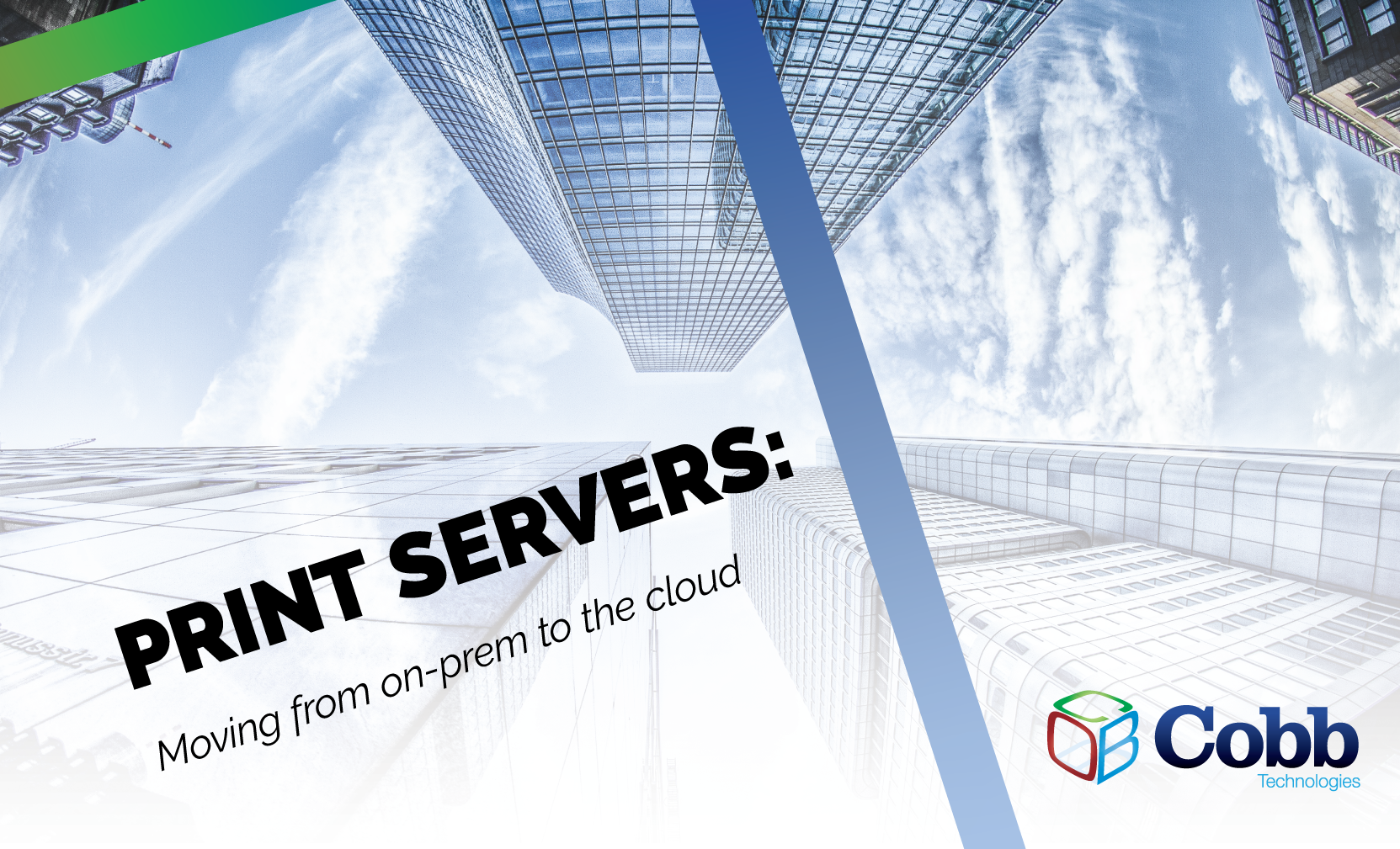11 min read
Best IT Strategies for Law Firms Going Into 2026
Why should a law firm invest in a strong modern IT strategy? Today’s legal teams depend on secure, reliable technology to protect sensitive...

Are you in the middle of the big decision of switching from an on-premise server to a cloud server?
In our experience, organizations usually love the reduction in management woes that come with switching from an on-site server to their cloud counterparts — server maintenance becomes something of the past, server upgrades turn from nail-biting, labor-intensive projects to the simple click of a button, and security woes are few and far between. But there can be a few unwanted surprises that come with migrating your print server to the cloud.
To avoid these surprises, it’s best to think of a cloud server not as a replacement for your on-premise server, but rather as an entirely new environment where every application and process must be reinstated.
This means that when migrating to the cloud, it’s not as simple as pushing a few buttons and uploading your files to the new server.
A server, when boiled down to its base, is simply a computer that has a lot of storage, and a lot more RAM than the computer you’re reading this on. There are also additional pieces of hardware, like switches, RAID (Redundant Array of Disks), and battery back-ups, to name just a few.
This idea of separate pieces creating an entire server is transferable to software as well. Servers have their own OS, just like your computer, and separate applications can be added to provide more functionality to the server’s environment. This includes simple processes like checking an employee password against what is listed in the server’s credentials, to incredibly complex tasks like maintaining a firewall and AV or EDR software.
Before cloud servers existed, on-premise print servers were solely responsible for tracking what an organization was printing and who that print should be charged to, whether that be a client, department, or even specific project.
This is one of those separate applications we mentioned up above — an on-premise print server isn’t a physically separate piece of hardware, it’s more like an apartment unit in the apartment building that is your server.
A print server can be another piece of hardware unto itself, however. Some organizations with a light daily print load can utilize a standard desktop computer to handle the load of the print server, freeing up processing power for the rest of their on-premise server.
This process runs in the background and the data that is aggregated is analyzed in an accounting software - meaning businesses can often forget that when migrating their server to the cloud they will lose the ability to track and manage their print data.
This is where print management comes into play. Print management software uses cost centers which are used to designate any sort of customer or internal billing for print jobs.
Print management software achieves this by acting as a “traffic cop” between your copier and your business’ accounting software. When you input a cost center into your accounting software, it will automatically sync with your print management software. Be careful before purchasing a print management client, however — some are not compatible with every accounting software on the market, so you will want to make sure they do indeed communicate with each other.
After printing, your print management software will communicate that print data to your accounting software, allowing you to charge back to the proper department client, or project, just like you would if you were using an on-premise server.
There is one slight difference between print management software and an on-premise server, however. Most print management solutions are only capable of charging back to a single cost center, meaning a print job cannot be attributed to a department and a project simultaneously. There are workarounds to the problem, but it is most definitely worth your consideration when weighing the benefits of switching to a cloud server.
So, if you can migrate the rest of your on-premise server to the cloud, why can’t you migrate your print server to your new cloud hosting? Theoretically, you could. However, this can lead to inefficiency in the form of latency.
When an employee presses “print” on their workstation, and the print server is on-premise, the file travels through the network to the print server, is processed by the server, and is then sent to the printer. This same process happens for a print server in the cloud, with one caveat. A cloud server, by definition, is not local to your network. It is far away, sometimes across state lines, and sometimes decentralized and spread out across many servers across the globe.
While this decentralization does allow for more secure server hosting, it slows down the process a print-server computes every time a document is printed. Rather than simply traveling through 50 or 100 feet of fiber-optic cable, or over local wi-fi, the document being printed needs to travel through your ISP’s lines to the physical location of the cloud server, process, and then travel back to your office’s location.
This can add seconds, and in very rare cases, minutes to the amount of time your print server needs to process a document before printing it. And this latency is not under your control. Once the print data has left your office’s local network, your ISP is in complete control of where and how that data is processed and transferred.
All in all, on-premise print servers are much more efficient than cloud print servers. This is why print management software is highly recommended for organizations that work within the cloud for their IaaS (Infrastructure as a Service).
Luckily, print servers require a relatively light amount of processing power when compared to most server functions. If the limitation of print management software only being able to attribute a print to a single cost center is a deal breaker for your organization, you can easily host a print server on a single desktop.
More than likely, your office has an old desktop computer that is ready for retirement — but don’t let it hit those sandy beaches yet. Because print servers require little processing power, older desktops are more than capable of filling the role of an on-premise print server.
Losing the ability to track print costs can be a major interruption to the daily operations of your business. Because of this, always make sure to confirm your IT department is aware of the loss of functionality when migrating to cloud servers. If you do not have an IT department, consider reaching out to a managed IT service provider.

11 min read
Why should a law firm invest in a strong modern IT strategy? Today’s legal teams depend on secure, reliable technology to protect sensitive...

2 min read
The Louvre’s password became the punchline of a global story after a heist revealed major security concerns for the museum. Reports say the password...

6 min read
Organizations of all sizes handle enormous volumes of data. Data is one of the most valuable assets of any organization.Unfortunately, it’s also a...